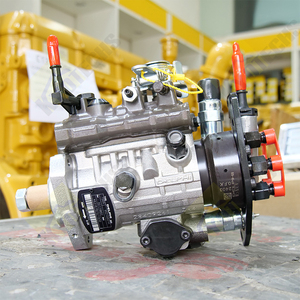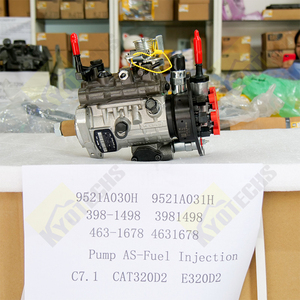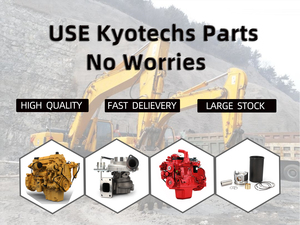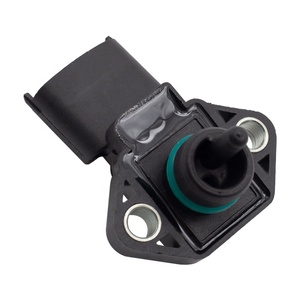(927 products available)



























































































































































MAP sensor 39330 22000 come in different types that suit various vehicles. Here are some of them:
Absolute pressure sensors:
This type of sensor measures the pressure inside the intake manifold relative to a complete vacuum. It is the standard type of sensor used in most modern vehicles. The data collected by this sensor is used to calculate the air density in the intake manifold. This information is crucial for the engine control unit (ECU) to optimize the air-fuel mixture for efficient combustion.
Gauge pressure sensors:
These sensors measure the pressure in the intake manifold relative to the ambient air pressure. They are less common in automotive applications but can be found in some specialized vehicles or aftermarket tuning setups. Gauge pressure sensors provide a relative measurement of pressure changes concerning the surrounding atmospheric pressure.
Digital MAP sensors:
Digital sensors convert the measured pressure data into digital signals. This allows for more precise and accurate measurements of pressure changes within the intake manifold. Digital MAP sensors can provide finer resolution and faster response times, enabling advanced engine control strategies and improving overall engine performance and efficiency.
Bidirectional MAP sensors:
These sensors can measure both positive and negative pressure changes in the intake manifold. They are particularly useful in forced induction systems, such as turbocharged or supercharged engines. Bidirectional sensors can monitor manifold pressure during boost (when the engine is under load) and provide feedback to the ECU for precise control of the air-fuel mixture, ignition timing, and other parameters, ensuring optimal performance across the entire engine operating range.
Here are some specifications of the MAP sensor 39330 22000 that buyers should be aware of:
Operating voltage
The MAP sensor works on an operating voltage of 3 to 5 volts. It gets a constant voltage of 5 volts from the ECM. The change in pressure readings at the sensor terminal sends back a change in voltage signal to the ECM.
Output voltage
The output voltage of the MAP sensor is 0.5 volts to 1.0 volt, which indicates the engine's low-load condition. In contrast, the output voltage is 3.0 volts to 4.5 volts at high-load conditions or full-load engine intake manifold pressure.
Reference voltage
The MAP sensor uses a reference voltage of 2.5 volts. It is the center point of the sensor's output range. The change in engine load conditions causes a deviation from this reference point.
Pressure range
Another important specification to take note of is that the MAP sensor can measure pressure levels of 0 to 30 inches of mercury (inHg) or 0 to 100 kilopascals (kPa). It corresponds to a low vacuum level or a reduced pressure state.
Temperature range
The MAP sensor can function in a temperature range of -40°C to 125°C (-40°F to 257°F). This temperature range is suitable for most automotive applications, including extreme weather conditions or high engine bay temperatures.
It is important to maintain the MAP sensor 39330-22000 to avoid vehicle performance issues like poor fuel efficiency, sluggish acceleration, and increased exhaust emissions. Here is how to maintain the sensor:
1. Regular Inspection
Carry out regular inspections to identify any signs of wear or damage to the map sensor. Also, check the electrical connectors and wires for corrosion, loose connections, or fraying.
2. Clean the Sensor
Use a MAP sensor safe cleaner or electrical contact cleaner to clean the sensor housing and ports. Do not use abrasive materials because they can damage the sensor surface.
3. Check Vacuum Hose
Inspect the MAP sensor vacuum hose for MAP sensor leaks, cracks, or damage. Ensure the hose is properly connected to the sensor and the intake manifold. Replace the hose if there are any issues.
4. Monitor Engine Performance
Keep track of the vehicle's engine performance, fuel efficiency, and driving behavior. If there are any changes, it might be an early indication of a faulty MAP sensor. Do proper diagnostic tests to confirm sensor issues.
5. Follow Manufacturer Recommendations
After carrying out all the maintenance activities, be sure to follow the maintenance schedule and recommendations for other vehicle parts and components. This practice will help maintain the overall vehicle performance.
Choosing the right MAP sensor for a business is a critical decision that impacts inventory management and customer satisfaction. Here are some factors worth considering.
Vehicle Compatibility
It is important to consider the vehicle make, model, and engine type before choosing a MAP sensor. This is because different vehicles have different sensors that are designed for specific vehicles. Additionally, business owners can avoid costly damages that can be caused by using an incompatible sensor.
Quality and Reliability
Business owners should choose a quality and reliable MAP sensor to avoid frequent failures and replacements. Additionally, they should consider the quality and reliability of the supplier's products.
Warranty and Support
Business owners should choose a MAP sensor that has a good warranty period. This protects them from unforeseen damage and failure. Additionally, they should consider the support services offered by the supplier.
Price
Business owners should choose a MAP sensor that is within their budget. Additionally, they should compare different suppliers to get a good deal.
Easy Installation
Business owners should choose a MAP sensor that is easy to install. This eliminates the need for an expensive professional mechanic. Additionally, they should consider the time taken to install the sensor.
Sensor Type
Business owners should choose a sensor type that matches their needs. This could be a barometric or differential pressure sensor. Additionally, they should consider the features of the sensor, such as its accuracy and response time.
Here is a step-by-step guide on how to replace a map sensor:
Turn Off the Engine
Firstly, the engine should be turned off, and the engine cool be ensured before starting the process. This is because the engine may be hot, and there is a risk of burns from the hot engine.
Locate the MAP Sensor
The next step is locating where the MAP sensor is found. It is generally located on the intake manifold or close to the firewall. Once found, the connector plug is to be removed carefully.
Check for Retaining Screws or Clips
After that, the user should check for any retaining screws or clips that hold the MAP sensor in place. In case there are screws, a screwdriver should be used to loosen them. If there are clips, they should be pried off gently with a flat tool.
Remove the Old MAP Sensor
It is now time to remove the old MAP sensor. Disconnect the sensor from the electrical connector and then remove the vacuum hose. After that, the sensor should be gently pulled away from the mounting location.
Prepare the New MAP Sensor
Before installing a new MAP sensor, it should be checked to make sure it is the right one for the vehicle. Also, the mounting surface should be cleaned to ensure proper adhesion and performance.
Install the New MAP Sensor
At this point, the new sensor should be aligned with the mounting location and then pressed gently to avoid damage. If the new sensor uses screws or clips, they should be tightened or secured, respectively, and if there is any electrical connector, it should be reconnected.
Reconnect the Electrical Connector
Once the new MAP sensor is installed, the electrical connector should be reconnected. After that, the vacuum hose should be reconnected to the sensor.
Check for Proper Operation
At this point, the ignition should be turned on without starting the engine to ensure all the electrical connections are good and then start the engine and let it run for a few minutes. The engine performance should be monitored to ensure it runs smoothly.
Clear Any Diagnostic Trouble Codes (DTCs)
Once the new MAP sensor is installed, any diagnostic trouble codes should be cleared using a scan tool. After that, the tool should be disconnected, and the vehicle's computer should be allowed to re-adapt to the new sensor for a few minutes.
Check for Leaks
The final step should be checking for any vacuum leaks around the sensor. A hissing sound should be listened for, and if any leaks are found, they should be addressed immediately to prevent engine performance issues.
Q1: What is a MAP sensor?
A1: A Manifold Absolute Pressure (MAP) sensor is an essential part of the fuel-injection system. It measures the pressure of the air inside the intake manifold. The readings from the MAP sensor help the engine control unit (ECU) figure out how much fuel to inject into the engine. Basically, it helps keep the air-fuel mixture just right so the engine runs smoothly.
Q2: What does a MAP sensor do?
A2: A MAP sensor measures the pressure of the air in the intake manifold. This pressure correlates with the amount of air entering the engine. By monitoring changes in manifold pressure, the MAP sensor provides data on the engine's load and operating conditions. The sensor is vital for the engine control unit (ECU) to adjust fuel delivery based on real-time air pressure information, ensuring optimal combustion and efficient engine performance.
Q3: Where is a MAP sensor located?
A3: The MAP sensor is generally located on the intake manifold. The intake manifold is the part that distributes the air and fuel mixture to the engine's cylinders. Locating the MAP sensor on the intake manifold allows it to measure the pressure of the air inside the manifold, which is essential for monitoring engine load and adjusting fuel delivery.
Q4: Can an engine run without a MAP sensor?
A4: An engine can technically run without a MAP sensor, but it will likely have performance issues. The engine control unit (ECU) uses data from the MAP sensor to manage fuel injection based on the engine's load and altitude. Without accurate input from the MAP sensor, the ECU may not optimize fuel delivery, leading to poor combustion, reduced power, and increased emissions. In modern cars, other sensors like the throttle position sensor can partially compensate for a faulty MAP sensor. However, relying on substitutes may affect engine performance and efficiency.
Q5: Can a MAP sensor be cleaned?
A5: Yes, a MAP sensor can be cleaned. Over time, deposits or contaminants can accumulate on the sensor's surface, affecting its performance. Cleaning the MAP sensor with a specialized electronic cleaner or isopropyl alcohol can help restore its accuracy. It is essential to follow the manufacturer's recommendations and use the right cleaning products to avoid damaging the sensor.